Pursuing Your Passion For Pickles (Recipe: Garlic-Dill Pickles)
Written by Lynn Craig of Cookie Baker Lynn.
Pickles seem like a funny thing to get excited about. They’re just cucumbers in jars with liquid and seasonings, right? Right, but some people are quite passionate about their pickles.
A dear friend of mine who is a US transplant living in the UK says one of the things she misses the most is dill pickles. The shops there just don’t carry them. On a trip to visit family in the US she returned home with jars of pickles in her carry-on luggage (not something you can do these days). She got strange looks, but it was worth it to savor just-right dill pickles.
There is a deli in the Pike Place Market in Seattle that flies in their pickles every week from New York so they’ll be “right.”
And then there’s my son. Pickles are his favorite food group. He’ll beg me for a pickle to snack on while I’m slicing some and when he’s eating a sandwich or a hamburger, it’s got to have pickles or it’s not right.
The beauty of canning your own pickles is that you can make them to suit your own personal tastes and needs. Pints or quarts, dill or sweet, garlic or jalapeno, you can choose. And if you grow your own pickling cucumbers (I don’t – I am known as She-Who-Kills-Plants), you can even get just the right variety for the size and type you prefer.
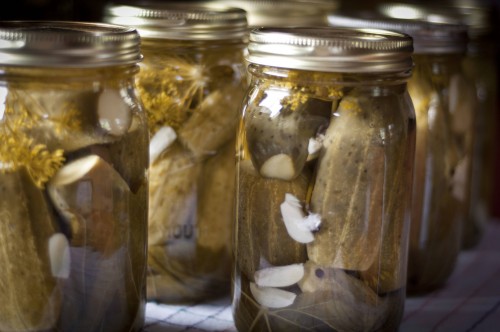
Methods and Pickling Basics
Pickles can be as quick and easy as pouring hot brine over cold cucumbers in jars and processing in a water bath. Or you can choose to brine the cukes overnight in a salt water bath to draw moisture out of them so the pickling solution better permeates into them. Or you can barrel ferment them over a period of 3 to 6 weeks. Or process them over 9 days to draw out the best flavor.
The methods of making pickles, the varieties of pickles, and the recipes for making them would fill several cookbooks, so I’m not going to try for all-inclusive here. I’ll walk you through a basic dill pickle recipe, then you can experiment and find the recipe that will be cherished and handed down in your family with your name attached to it.
Imagine having your great-grandchildren bugging their mother for Nana Lula’s Garlic Dills recipe! (Well, that only works if your name is Lula, so try imagining it with your name inserted.)
Some pickling basics:
~ Select only ripe, firm, unblemished pickling cucumbers of the appropriate size for your recipe. Mushy cucumbers will not magically become crispy when brined.
~ Pickling cucumbers have a thinner skin than regular cucumbers, so they are best used within 2 days of harvest.
~ Use pickling or canning salt which is pure salt without additives. Table salt has anti-caking agents and iodine which will make your brine cloudy.
~ Don’t modify the amount of salt, sugar, vinegar, or water in a recipe. They work together to produce a safe pH level for the pickles and a good flavor balance.
~ The jars need to be hot when you fill them. You can run clean jars though a sanitizing cycle in the dishwasher, or fill them with hot water and put them in a pot of hot water over low heat. I like to use the canning pot as a hot water bath. Don’t heat the jars in a dry oven; this can damage the glass.
~ Most pickles need to mature at least a week for the best flavor. Label the finished jars with the date they were made and the date they’ll be ready to eat.
~ Grape leaves or alum are sometimes added to a pickle jar to enhance the crunchiness of the pickles.
~ Chill pickles thoroughly in the refrigerator prior to opening for best texture.
Recipe: Extra-Garlic Dill Pickles
Because garlic is popular in our house (understatement), I made Extra-Garlic Garlic Dills. Again, you can change the amounts if that’s too much for your tastes.
This recipe makes about 7 quart (1 L) jars of pickles. Here’s what you’ll need:
Equipment –
- 7 glass quart canning jars, wide-mouth
- 7 canning lids, new
- 7 canning screw rings, rust-free
- A large canning pot
- A rack for the canner
- A small saucepan for the lids
- A large pot for the brine
- A large non-reactive bowl that will hold 7 lbs of cucumbers
- A wide-mouth funnel
- Clean towel to set the jars on
- Clean cloth to wipe the jar tops
- Kitchen timer
- Jar lifter
- Silicone tongs
Ingredients-
Day 1
- 7-8 lbs (4 kg) of 3-4-inch (7.5 to 10 cm) pickling cucumbers
- 1 cup (250 ml) pickling or canning salt (not table salt)
Day 2
- 35 peppercorns
- 1 Tbsp (15 ml) pickling or canning salt
- 7 cups (1.75 L) water, preferably filtered
- 6-1/2 cups (1.625 L) of white vinegar
- 21 cloves of garlic, each cut into quarters
- 14 dill heads
- 7 grape leaves (optional)
Day 1
1- Scrub the cucumbers gently under running water to remove dirt and prickly bits. Trim off 1/8-inch (3 mm) from each end and prick all over with a fork.
2- In a large bowl, layer cucumbers and salt using about one-quarter of each per layer. Add cold water to cover by about 1 inch (2.5 cm). Place a plate on top to weigh down the cucumbers. Cover and let stand at a cool room temperature for at least 12 hours or for up to 24 hours.
3- Soak dill heads upside down in a bucket of salt water overnight. Any bugs on the heads will either drown or crawl away.
Day 2
1- Wash jars thoroughly in hot, soapy water and rinse well. Fill the jars with hot water and place them in the canning pot. Fill the canning pot with hot water, making sure the water covers the jars by at least 1 inch (2.5 cm).
2- Cover the pot and bring the water almost to a boil over medium-high heat (30 to 60 minutes). When the water is almost boiling, reduce the heat to keep it at a simmer and keep the pot covered until you’re ready to use the jars.
3- In a small saucepan, bring 2 inches (5 cm) of water to a simmer. Add the lid disks, cover the saucepan, and take it off the heat.
4- Working in batches, with a colander, rinse and drain the cucumbers. Rinse again and drain well. Set aside.
5- In a pot combine the salt, water, and vinegar. Bring to a boil over medium-high heat, stirring often until salt is dissolved. Boil for 1 minute. Reduce heat to low and keep liquid hot. Keep covered to prevent evaporation when you’re not using the liquid.
6- Use the jar lifter to lift a jar out of the simmering water. Pour the hot water out into the sink and put the jar on a towel on the counter. Place 1 grape leaf (if using), 6 pieces of garlic, 4 to 5 peppercorns and 1 dill head into the jar. Pack cucumbers into the jar, leaving about 1 inch (2.5 cm) headspace, and top with 6 pieces of garlic and 1 dill head.
7- Place the canning funnel over the jar and using a ladle, pour hot pickling liquid into the jar, leaving 1/2-inch (1 cm) headspace. Remove air bubbles and adjust headspace as necessary by adding hot pickling liquid. Wipe the rim with a clean cloth or paper towel dipped in warm water. Using the silicone tongs, remove a lid disk from the saucepan of hot water and place it on the jar. Screw on a band until it’s fingertip-tight.
8- Repeat steps 6 and 7 with the remaining jars and ingredients.
9- Place the jars in the canner and return to a boil. Process for 15 minutes (start timing after the water has reached boiling). Turn off heat and remove the lid from the canning pot. Let the jars stand in the hot water for 5 minutes. Then use the canning tongs to transfer the jars to a clean towel on the counter and let them stand for 24 hours. You should start to hear the happy pinging of lids sealing as they cool. Any jars that do not seal should be refrigerated. Once the jars are cooled, label them with the name of the recipe, the date made, and the date they’ll be ready.
[print_link]
What’s your favorite pickle? If you have a favorite pickle recipe you’ve posted, feel free to leave a URL in your comment.

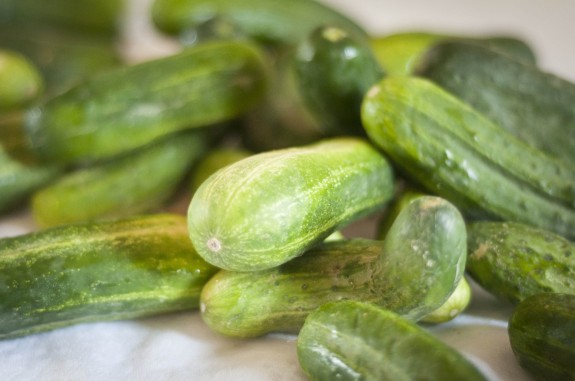
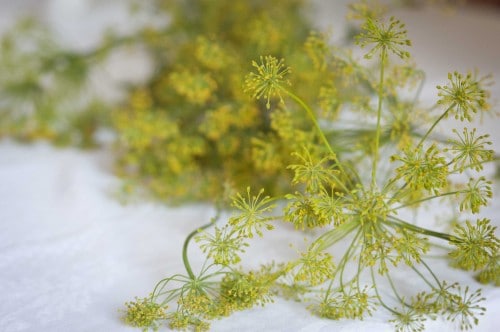
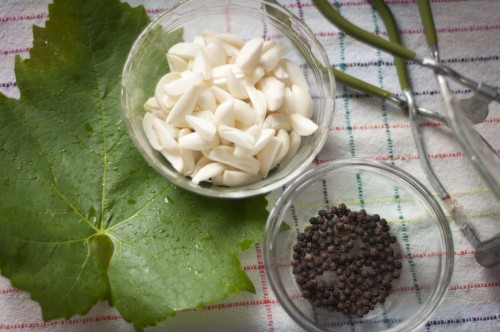
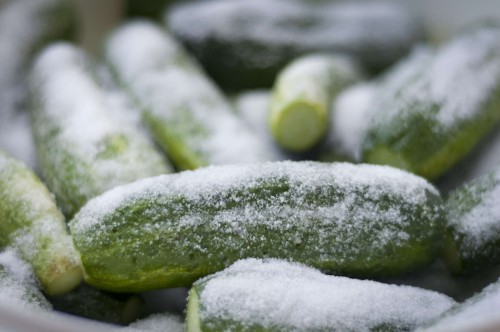
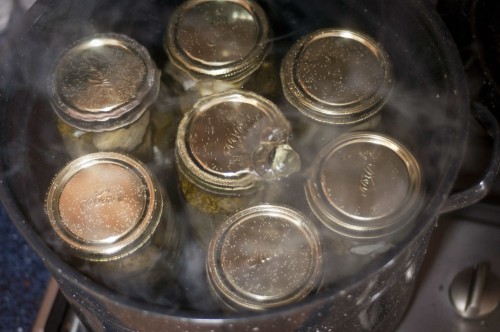
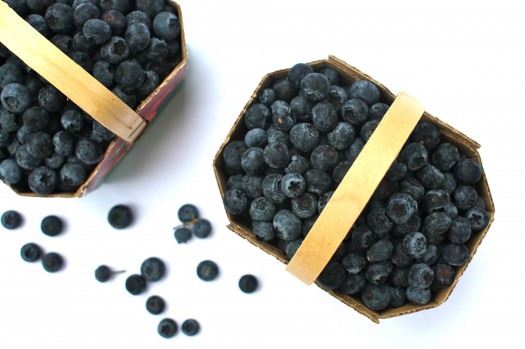
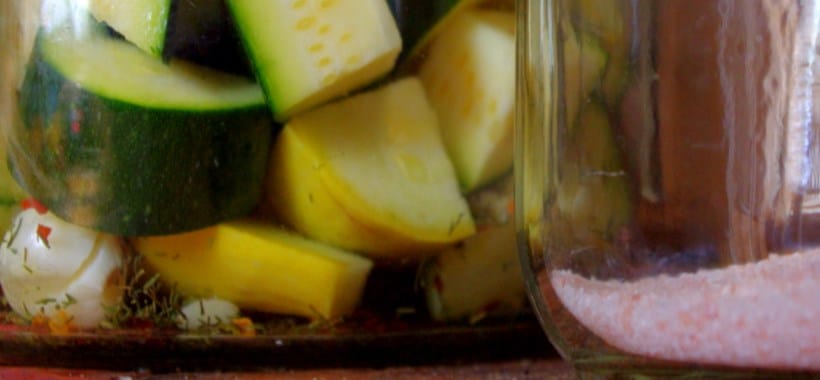
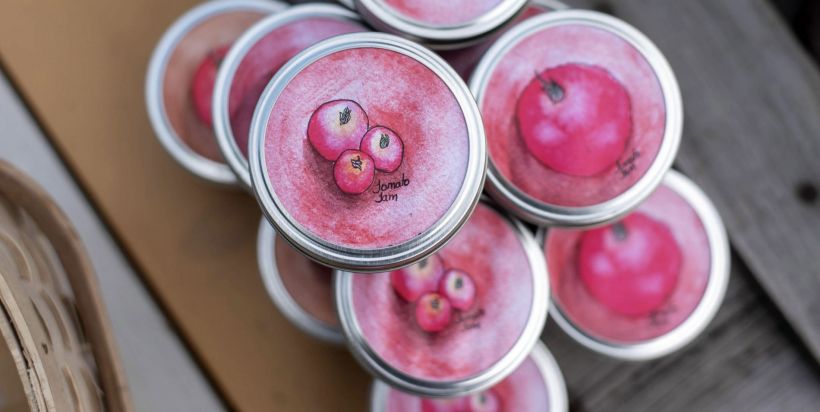
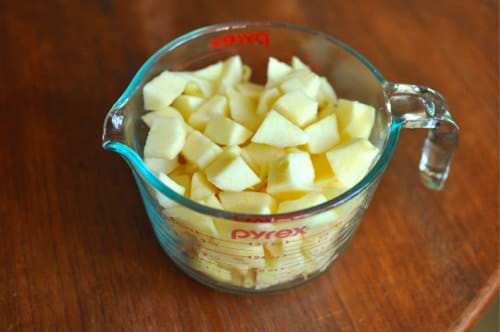
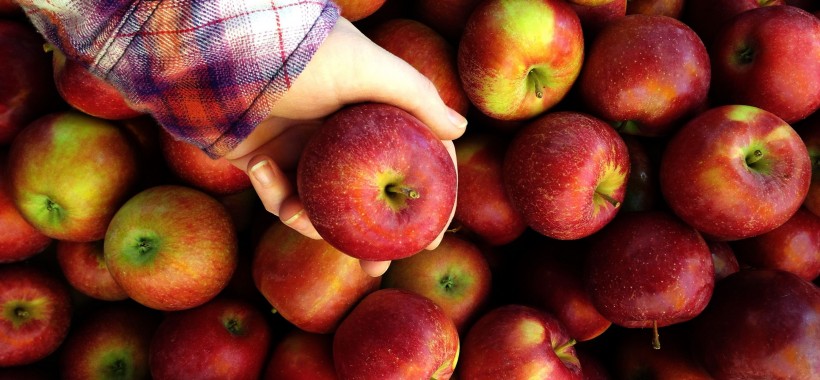
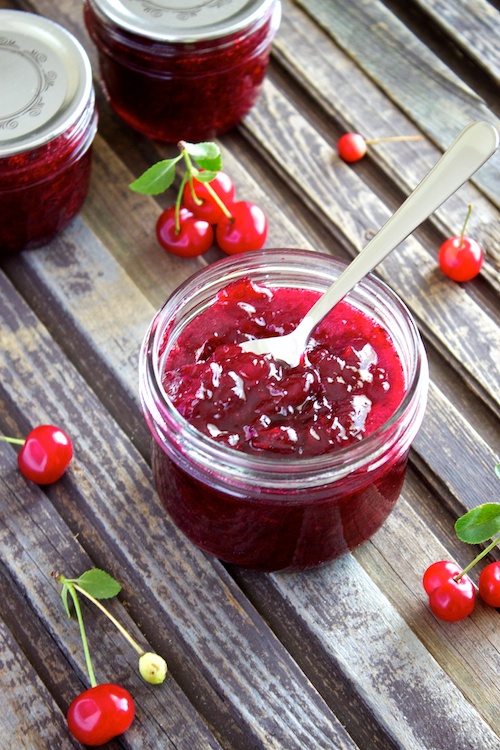
Why do my pickles get cloudy I do use pickleing canning salt. I wash them well. Do everything you have mentioned. Are they ok to use? They sure don’t look good cloudy.
That’s fermentation I think. No good dill pickle exists in my world without it. I’m always sad when some jars don’t turn cloudy, but I like the sour fermentation flavor.
Can I add some onion to the garlic dills without getting the ph out of balance?
No you will die
I just made these today…my pickling cukes (out of the garden) were huge, so I sliced them just before packing them. Now I’m wondering if I should have sliced them prior to the brine last night? Anyway, I can’t wait to see how they turn out–I’m listening to the jar lids pop as I type this. 🙂
I slice mine and they turn out amazing. Like to cut them for Caesars they turn out great everytime
I cannot wait to try these!!! my gram used to make a pickle that sounds JUST like this! None of my aunts or uncles have the recipe and my great aunts chuckled at me when I said the pickles had grape leaves, lol. Sadly, I have combed the area looking for dill and it cannot be found do you have a suggestion for dried?
I’ve used dill seed in pickles when I don’t have fresh dill…about two teaspoons per quart, and it was good!
You can use alum instead of grape leaves and use dill seed insyead of the the heads. Excellent results with both.
Strangely enough I’ve found dill grows quite well in pots too, if you don’t have a garden. If you can find a variety called Mammoth – it makes HUGE heads, that you can split for multiple jars (I’m talking the heads on one plant were a foot wide and I got multiple heads, it was awesome! The perfect breed for pickling.) I have also used dill weed – just the fresh stuff from the grocery store to pickle with, you just need more of it as it’s not as strong as the seed (about double).
love your site its v goon nice as well as a simple way i like piclis alot
I just made these tonight but I am kind of worried as my crunchy cucumbers turned soggy…. I was supposed to soak them with salt AND water… correct? Also, how come the recipe calls for such little salt? Because they were soaked in salt? This is my first time pickling… 🙂
Mine use to get mushy even with alum or grape leaves. Water bath for 15 minutes cooks the cukes. I boil my brine fill the jars and put back in water bath for 2/3 minutes to get the heat up to make sure they seal. They turn out great. The vinegar keeps it safe. I know this goes against USDA guidelines but I have done this for 20 years. Do what you are comfortable with. Use at own risk. Ok start the bashing
Thank you for your honesty .. My Aunt made great pickles that were great.. She made a joke about my mother cooking the hell out of her pickles when she made them and we all got a good laugh.. Going to try the 2/3 min bath for mine this weekend !!
I’ve struggled with this for years. I used to make good pickles with no BWB. Then every recipe started recommending it so they scared me. After that I did the BWB and no matter what I did my pickles were mushy so I gave up. Going to try pickles again this year but I’m looking into doing them without the BWB. Tired of mushy pickles!
I don’t soak mine prior and they be always been nice and crunchy
I had no idea that grape leaves could be used instead of alum for pickle crispness. That’s new to me!
Im looking at your recipe because i want to make pickles. I want you to know that by describing this process as “simple”, when the ingredients and tools i would need to make them cost in excess of 100 dollars is… stupid. Expletives are thoroughly appropriate to describe how stupid that is. I imagine your recipe is great. I will never know, because i dont have >100 to piss down the drain on a culunary experiment. Its so nice for you that you do.
Just read AES comment….all I can say is “WOW”!!….just WOW!!…..so negative and nasty.
But….back to my question…
Grape leaves not available….How much alum can be substituted?
Thank you…..
1/4 tsp of alum
Hey, if you didn’t already know canning stuff costs money you have no business doing it in the first place!!!! Give your head a shake!
most people who can already can have tools. not hard if have no money big pot for boiling tongs not metal they might Crack hot glass. lid for pot.the jars can be bought at any used thrift store just clean and buy new lids a box runs maybe 4 dollars done .I don’t have the fancy canner I was able to can jam.
I made these pickles for less than $25. The purchase of the spices, which last forever is the most expensive part. I’ll be making more next week! Even purchasing more cucumbers and jars they come out to $2.00 per quart. I can afford that for he flavor I love!
I’m having a a hard time understanding how this adds up to over $100. Most home cooks have a large stock pot you could use if you’re making pints and the tongs can be purchased for under $5. I just had to purchase all new ingredients today to make my pickles and the total for ingredients was around $25. So. 30 dollars and 90 minutes of your time. I don’t feel the author is out of line or the stupid one here.
Geez, then just go buy a jar of them at Walmart!
Garage sale, recycle, thrift shop, etc…. heck a home canning kit to start me only cost me $30. Yeah the jars are a bit pricey, but you reuse the jars themselves, and just buy new snap lids every year. And it’s worth it to get fresh homemade items. Mass produced junk is always going to be cheaper. But Walmarts pickles taste like mushy, tasteless crap 😛 So if you’re willing to pay for that, go ahead. But if you want to put a little money, time, and effort into something that you know where the ingredients came from, and what they are, and something that you know tastes good, then quit griping on the fact that it costs more. Quality always is going to cost more. And once you have the equipment, and if it’s decent quality, it lasts a lifetime. Many of us have been using ours for years, or are using our mom’s or grandmother’s….
When having a log home built or you, there are some major cost factors you will want to take
into consideration. If you look at recent birds-eye photographs of the
large New Urbanism communities there is a view of seemingly endless roofs.
No1 Discount sheds History & Manufacturing Pedigree.
I have also just moved the the U.K. and I cannot find a garlic dill pickle anywhere (Oh how I miss Bick’s Baby Dills with Extra Garlic!). I also realllly miss deep fried dill pickles. I will have to try this recipe! Thanks!!
I’m running into a problem already (this happens anytime I try to make a recipe in the UK). They don’t sell dill heads here; will dill fronds work? I may be able to find those.
Alana, just use a bit of dried dill seed instead.
This will be my second time making these, I omitted the grape leaf and added alum instead. I also put one hot chili in half the jars for a spicy kick! Awesome recipe thanks!
I finally found a recipe for brine that is not completely saturated in salt!!! This mixture is wonderful. I have a recipe for refrigerator dills with a lovely mixture of spices but the salt content….OMG, my blood pressure goes up just thinking about it. This is just perfect! Thank you so much for this!
Can you use pickles to make these flavored pickles
For fifty years my mom made dills. They were the best ever. She has passed and i have her old recipe box. I just made 22 quarts of pickles and i am wondering if i need to throw them out. Her recipe call for 1 quart vinager to 2 quarts water plus one cup pickling salt for the brine. Put boiling brine over the cukes and hot water bath at a boil for 15 minutes. I have been eating these for fifty years. Now i am wondering because all the new recipes say at least a 50/50 ratio. Should i throw them out.
I saw that some people do not soak the cukes overnight. Is there a difference in taste and texture? What is the purpose of this phase, actually? And in the soaking phase, can I adjust how much salt I want to use?
Thank you!
Whenever I soak my cukes in salt water first, no matter how much I rinse, my pickles seem to be too salty. I completely went by the above recipe so I know I didn’t use too much salt, in fact I cut back on it a tad. What am I doing wrong? I rinse and rinse and even soak in fresh water to leach the salt out.
I have the best recipe for pickles handed down from my great grandmother, 3 quarts water to one quart pickling vinegar, 3/4 cup pickling salt, 1/2 cup sugar, and simmer, pour hot brine over your cukes, that are stuffed into jars with dill and fresh garlic cloves, and that’s it, no need to process and keep them in your cellar or cold room, they will last a year.
I believe other website proprietors should take this website
as an model, very clean and excellent user pleasant style.
Thank you, I’ve just been looking for info approximately this subject for ages
and yours is the greatest I have discovered till now.
But, what concerning the conclusion? Are you sure concerning the source?
Just wanna input that you have a very decent
web site, I enjoy the pattern it really stands out.
I grow my own Kirby cubes…I never have enough at any given time to match more than a couple jars. Can I make brine ahead if time and use as needed when I get enough for a full h]jat of pickles?
I have been growing my own veggies for a few years now, harvesting and processing them accordingly. Pickles have become my obsession, trying to get that perfect mixture of ingredients to take me back to my childhood, when things were simple and the memories would last a lifetime. This year I am proud to say that I have found my perfect ratio to take my taste buds back to when I was a kid sitting at my grandmothers table while she brought out her canned dill pickles.
I live in London Ontario Canada (about an hour and a half from Detroit) and this years crop of pickling cucumbers has been stellar. I am picking 50 to 60 cucumbers, every second day off of 12 plants growing on a trellis.
My recipe is
Soak the cucumbers in water in the fridge over night
BRINE
3 1/2 cups water
2 cups vinegar (5% acidity)
1/4 cup pickling salt
SPICES
Fresh garlic ( 4 cloves per jar)
Fresh dill heads ( 2 large per jar)
Bay leaves (4 leaves per jar) this provides the tannin needed to produce a crunching pickle. You can also use grape leaves, oak leaves or black tea leaves.
Chili flakes (heaping teaspoon per jar)
Whole black pepper ( heaping teaspoon per jar)
Pickling spice (1 1/2 teaspoons per jar)
PROCESS
Everyone should know or can easily goggle search how to clean jars, after that put the dill, garlic, spices in the jar, jamb those pickles in there, add the heated brine. Put your sterilized sealers and rings finger tight on the jars, process in a rolling water bath for 8 to 10 minutes (my opinion is the government suggestions of 15 to 25 minutes is to protect their behinds…..again just my opinion but I’m still alive after 47 years) this amount of time does not make the pickles soft, they stay crunchy.
Take them out of the water then listen for the pop! I let mine sit for at least 3 weeks to get an all through flavor. After you feel they are ready to go, stick them in the fridge for a day……nothing worse than a room temperature dill pickle
One important step I forgot to mention…..before canning the cucumbers, cut off 1/8 to 1/4″ of the flower end of the cucumber. There is an enzyme in it that will not allow you to have crunchy pickles.
Gotta admit, I love this recipe just because of all the attention to detail. To some it may be overkill, but for me it is perfect. Tons of kudos for that. Will try this as-written on a small scale, but I’m a little confused because there are several common dill pickling ingredients that are omitted (onion, mustard seed, red pepper flakes, maybe celery seed). Just wondering if there is an issue with using any of these? Extra Garlic, dill and pepper corns are my favorites, though. thank you so much for posting.
I was interested to read one commenter’s post about using bay leaves if you don’t have fresh grape leaves. Has anyone tried using bay leaves? I’m assuming it would be dried bay leaves but whether fresh or dried, wouldn’t it leave a particular taste in the finished pickle?